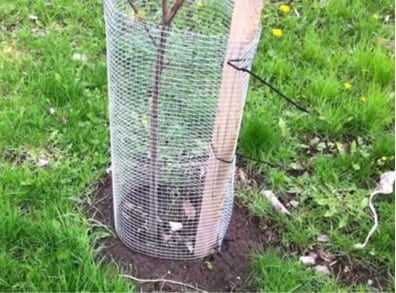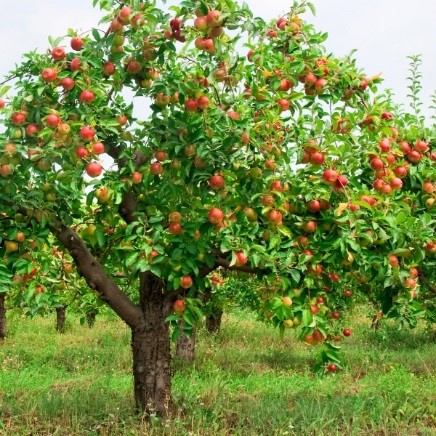 Who doesn’t love fall colors? Part of the allure of fall foliage is color variation. There are trees that turn red, purple, yellow, orange and brown.
Who doesn’t love fall colors? Part of the allure of fall foliage is color variation. There are trees that turn red, purple, yellow, orange and brown.
Specific plant pigments determine individual colors. Foliage gets its normal green color from chlorophyll, the substance that captures the energy of the sun. Other pigments produce fall colors. Reds and purples are caused by anthocyanins, yellows by xanthophylls, and oranges by a combination of carotenes and xanthophylls. Browns are the result of tannins present in the leaf. Most of these substances are present throughout the growing season but are masked by the green color produced by chlorophyll. Anthocyanins are the exception and are produced after the chlorophyll is destroyed in the fall.
If you have ever seen pictures of New England in the fall, you have probably wondered why trees in Kansas usually do not color as well. This difference is partly because of the tree species prevalent in New England. Certain oaks and maples naturally produce good color. Coloring also is influenced by the weather.
Warm, sunny days and cool nights are ideal for good color. The sunny days encourage photosynthesis and, thus, sugar accumulation in the leaves. As fall progresses, each leaf develops an abscission layer at the base of the petiole, or leaf stem, that prevents these sugars from being transported down the trunk to the roots for storage. This high sugar content in the leaves produces more intense colors. Cloudy days and warm nights prevent some of the sugar accumulation in the leaves and results in less vibrant colors.
Weather during other parts of the growing season also can have an effect. Heavy rains in the early spring or hot, dry weather during the summer can both have a deleterious effect on fall color.
The length of time a tree maintains fall color also depends on weather. Reds, yellows and oranges are short-lived when trees undergo frosts and freezes.
By: Cassie Homan
 Fall is a great time to plant a tree. If you have been wanting to get a tree planted in your landscape, start shopping now. K-State has tested many shade trees to do well in our weather conditions.
Fall is a great time to plant a tree. If you have been wanting to get a tree planted in your landscape, start shopping now. K-State has tested many shade trees to do well in our weather conditions. If you have newly planted fruit trees they need a little extra maintenance this time of year. Rabbits may begin to nibble on newly planted trees and shrubs through the winter. Protect your investment with at least 2-foot-tall cylinders of 1-inch-mesh, chicken wire, or similar barrier. Other control methods include plastic tree wraps and liquid rabbit repellents sprayed on the plants. Repellents will need to be reapplied each time it rains. It’s also a good idea to pick up fallen fruit in the fall. This will prevent diseases from overwintering and fungal spores will be destroyed.
If you have newly planted fruit trees they need a little extra maintenance this time of year. Rabbits may begin to nibble on newly planted trees and shrubs through the winter. Protect your investment with at least 2-foot-tall cylinders of 1-inch-mesh, chicken wire, or similar barrier. Other control methods include plastic tree wraps and liquid rabbit repellents sprayed on the plants. Repellents will need to be reapplied each time it rains. It’s also a good idea to pick up fallen fruit in the fall. This will prevent diseases from overwintering and fungal spores will be destroyed. After the holidays, many municipalities allow old Christmas trees to be placed curbside. Trees are then collected and ground up for mulch or burned. If you miss the designated date, or your trash collector doesn’t accept trees, there are several options to prolong the useful life of the tree.
After the holidays, many municipalities allow old Christmas trees to be placed curbside. Trees are then collected and ground up for mulch or burned. If you miss the designated date, or your trash collector doesn’t accept trees, there are several options to prolong the useful life of the tree. Who doesn’t love fall colors? Part of the allure of fall foliage is color variation. There are trees that turn red, purple, yellow, orange and brown.
Who doesn’t love fall colors? Part of the allure of fall foliage is color variation. There are trees that turn red, purple, yellow, orange and brown. The fall season can be an excellent time to plant trees. During the spring, soils are cold and may be so wet that low oxygen levels inhibit root growth. The warm and moist soils associated with fall encourage root growth. Fall root growth means the tree becomes established well before a spring-planted tree and is better able to withstand summer stresses. However, certain trees do not produce significant root growth during the fall and are better planted in the spring. These include beech, birch, redbud, magnolia, tulip poplar, willow oak, scarlet oak, black oak, willows, and dogwood.
The fall season can be an excellent time to plant trees. During the spring, soils are cold and may be so wet that low oxygen levels inhibit root growth. The warm and moist soils associated with fall encourage root growth. Fall root growth means the tree becomes established well before a spring-planted tree and is better able to withstand summer stresses. However, certain trees do not produce significant root growth during the fall and are better planted in the spring. These include beech, birch, redbud, magnolia, tulip poplar, willow oak, scarlet oak, black oak, willows, and dogwood. If you have fruit trees, now is the time to prune them before the trees break dormancy. Fruit trees can be pruned through March as long as the wood isn’t frozen.
If you have fruit trees, now is the time to prune them before the trees break dormancy. Fruit trees can be pruned through March as long as the wood isn’t frozen.